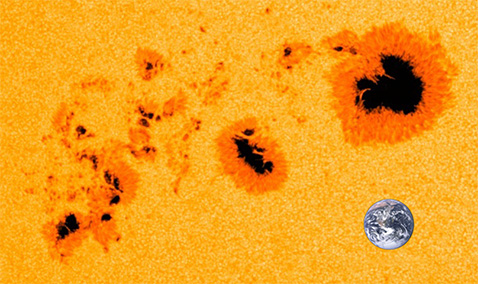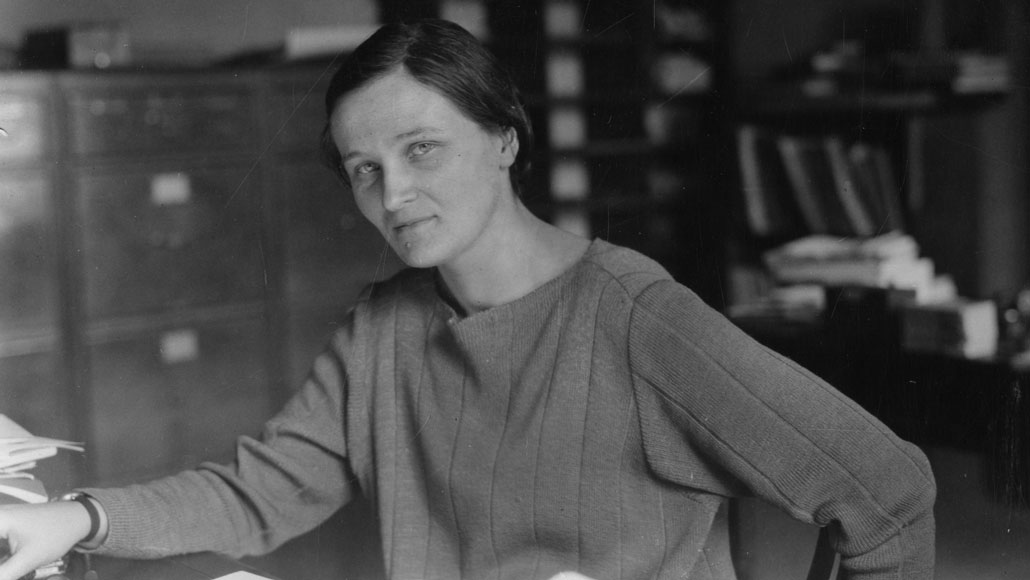 |
| Sunspot region 11944 at a size of 1480MH as seen by the Solar Dynamics Observatory. The Earth (about 170MH) has been added for scale. Source: Spaceweatherlive.com |
What stars are made of:
So sunspots are planet-sized blisters on a gigantic ball of light. But until 1926 we did not know what that ball of light was actually made of. It is common knowledge today that the sun at its core is a nuclear fusion reactor mostly made up of Hydrogen (70% by mass) followed by Helium (27%). However even as late as 1925, scientists, based on spectroscopic comparisons made on earth, believed that the sun is of similar composition as the earth's crust.
In hindsight this seems like a ridiculous proposition. However it took nothing short of a pioneering astrophysicist, Cecilia Payne, and a gritty battle against the status quo, to establish what the Sun, and for that matter most stars, are made of. She correctly concluded, that the sun was mostly made of hydrogen. This was informed by an ionization theory named after the Indian scientist Meghnad Saha, whom she met at Harvard. Payne's PhD thesis finding, was that the variance in solar spectra was a function of levels of ionization at different temperatures, not the relative abundance of elements in the sun and it refuted prevalent wisdom.
Stardom of a different kind:
 |
| Cecilia Payne at her desk at the Harvard College Observatory Smithsonian Institution Archives/ Wikimedia Commons |
At Harvard, as a lone 24 year old female PhD aspirant in astronomy, she was persuaded to omit the contrarian finding about the sun's composition. This she did, describing her own result as “spurious”. Later a male colleague would reach the same conclusion using different means, and despite acknowledging her prior work, would be often erroneously credited for it.
Unlike many talented women who have languished in obscurity, Payne's career ends on a triumphant note. Scientific achievements aside, she also scored several professional firsts: starting off as the first woman to receive a PhD in astronomy at Harvard, she eventually became the first female professor, and the first woman to become department chair there as well. In a trail blazing career marked by a quiet persistence she had shown the world what stars are truly made of.

No comments:
Post a Comment